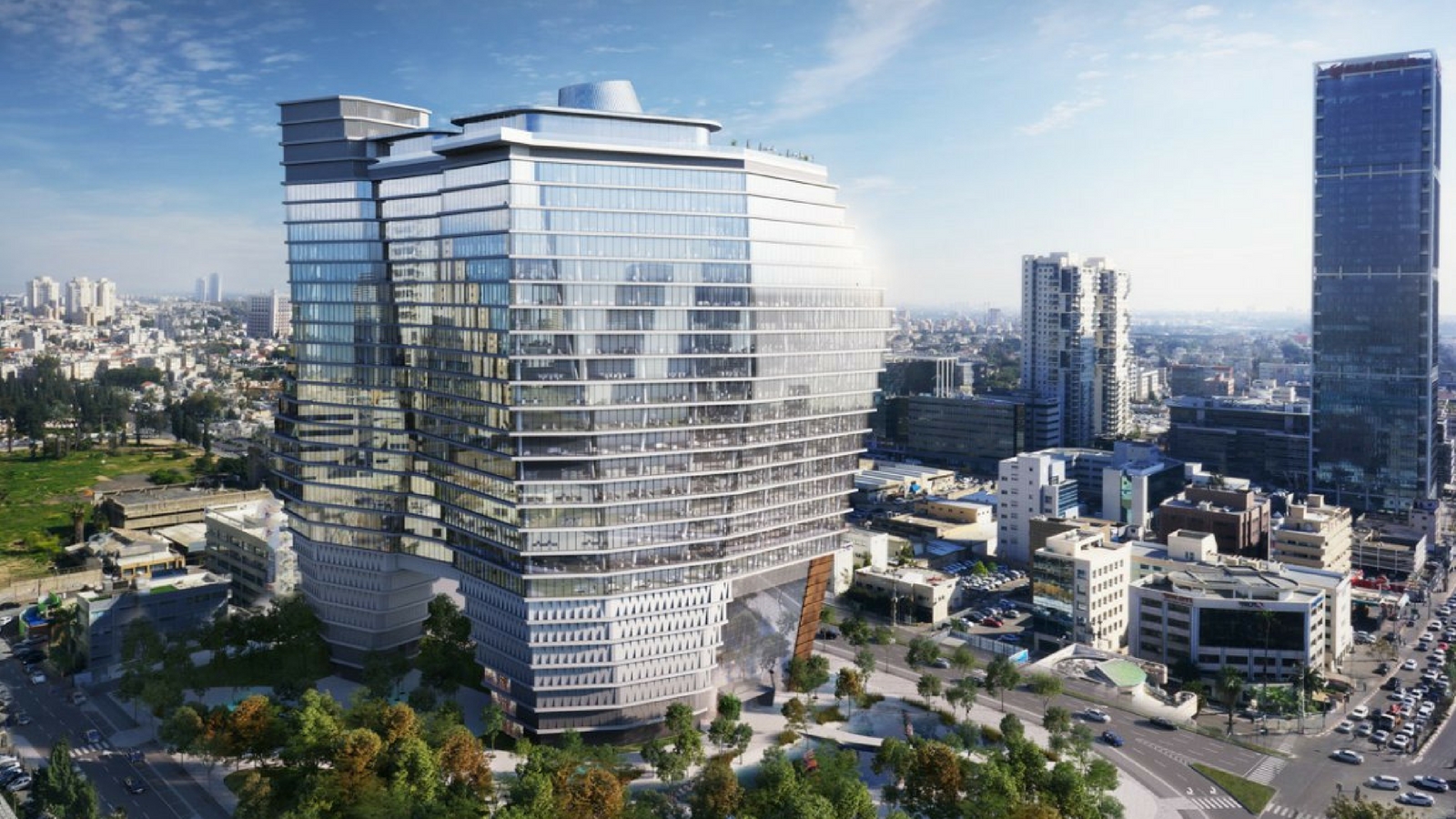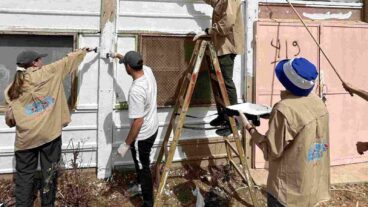Award-winning Israeli architect and designer Ron Arad does not like to be defined. Between his London-based architecture studio, furniture collaborations with Moroso, prestigious gallery shows at the Pompidou Centre in Paris and the MoMA in New York, it’s become clear that there are no boundaries for Arad when it comes to creation.
“It doesn’t help me to define. I do what I’m interested in, what excites me, and hopefully it excites other people. Is it art? Is it design? Who cares?” Arad told ISRAEL21c at a preview of his newest gallery exhibition, “All and Nothing.”
Despite having designed many well-known projects around Israel, including the Design Museum Holon, “All and Nothing” is Arad’s first-ever gallery show in his native country.
The site-specific exhibition is taking place from March 22 to May 5 at Gordon Gallery in South Tel Aviv, an area that has become a growing center for the contemporary Israeli art scene in recent years.

The exhibition is centered on 32 irregularly shaped, stainless steel tables arranged throughout the gallery space. Some of the mirror-polished tables stand on four legs while others are carefully curved around corners and mounted to the wall, allowing gallery-goers to weave through the space and catch reflections from every angle.
Also of note are the empty spaces between the tables, which Arad says helped inspire the exhibition’s name, “All and Nothing.”
“It has to do with the reflections that reflect the world and the gaps between them – the nothing – that play a part as well,” said Arad. “It’s a name; you give something a name and the name begins to work.”
One wall-mounted table features perforated holes which, when looked at from afar, reveal a hidden message – klum (the Hebrew word for “nothing”).

Arad left Israel for London in 1973 but remained connected to his Israeli roots, frequently flying back and forth for design projects and family visits. Although most of his work was created outside of Israel, Arad says that growing up in Israel influenced his work.
“I grew up here [in Tel Aviv] and that’s where I learned about the world and about art,” Arad told ISRAEL21c. “Also for the last 45 years I have not lived here, so being an outsider has its own quality. It gives you freedom to do what you want. You don’t owe anything to your old neighbors and aunt.”
After training as an architect at the Architectural Association in London, Arad transitioned into industrial design in the early 1980s after stumbling upon a Rover car seat in a local scrapyard and transforming it into the iconic Rover Chair. Since then, Arad has designed bestselling chairs, tables and bookshelves whose commercial success has landed them in homes around the world.

Arad returned to architecture in 2008, when he established a separate studio, Ron Arad Architects, to focus on a wide range of projects including designing restaurants, residences, hotels and large-scale public projects.
Among the spaces he has designed are the technology floor at Selfridge’s in London, a Yohji Yamamoto boutique in Tokyo and the Watergate Hotel in Washington, DC.

His most recent architecture project in Tel Aviv, the ToHa office tower, made headlines when it became known as the tallest building in Israel. The office development, located at the junction of Hashalom and Yigal Alon streets, consists of two towers (28 and 64 stories) and is set for completion this year. The angles of the towers’ iceberg shape are intended to maximize solar shading for the occupants and reduce the structure’s carbon footprint.
Another Israel-based project in the works is the Beit Shulamit cancer treatment center at Emek Medical Center in Afula, a regional hospital in the north. The facility will serve a diverse ethnic population including Jewish, Christian, Muslim and Druze communities from a wide spectrum of socioeconomic backgrounds.
“The thing is, even when you do a museum, do you save the world? No, you don’t,” Arad told ISRAEL21c. “There [at Beit Shulamit] it’s a no-brainer that we’re doing a good thing. The building is more to do with how we are improving the patients’ lives, the families, the people that work there; it’s not about what the building looks like as you drive past.”
For more information on Ron Arad’s “All and Nothing” gallery show, click here.















